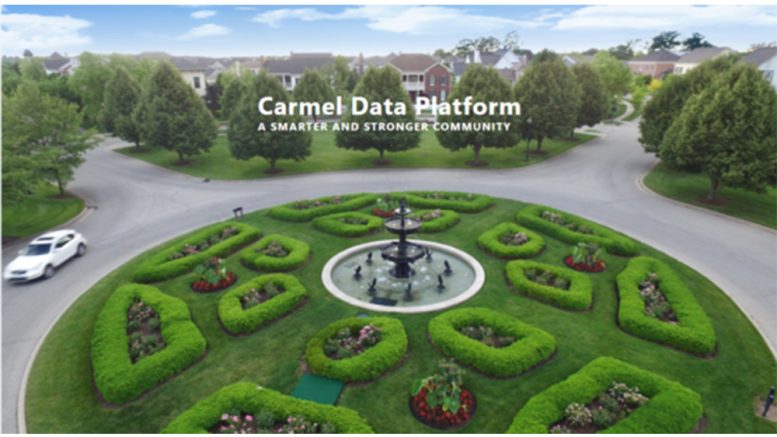Submitted by City of Carmel
The City of Carmel and its citizens have a new tool to explore how the city’s nationally-recognized network of 145 roundabouts has vastly improved traffic flow, allowed motorists to spend less time in their vehicles and – most importantly – has resulted in historically low rates of accident fatalities and injuries.
City officials worked with a team from Community Data Platforms who analyzed data to determine the impact of implementing the roundabouts and making them the dominant method of handling traffic in Carmel, as opposed to the traditional use of traffic signals and stop signs.
After several months of compiling data on traffic flow, accident rates and the impact on businesses, the research has produced a unique new website to help residents get a better understanding of how roundabouts have improved their daily lives. You can see this new website at roundabouts.carmeldataplatform.com. Click on the User Guide (a link is located on the lower right side of the home page) to learn how the website works.
Some of the key findings of this study include:
- There are fewer personal injury accidents of pedestrians and cyclists at roundabouts than at traffic signals and other locations.
- Traffic flow for residents and commuters has dramatically improved. The annual average amount of time saved in 2020 was five days, or 120 hours, per motorist as roundabouts provide for increased flow without stopping. A new tool allows website users to simulate commutes as they are with roundabouts versus without them. Watch as the red and green dots show the difference between then and now.
- Roundabouts do not have a negative effect on businesses. On average, businesses at roundabouts earned more revenue on a per-vehicle basis than businesses at traffic signals.
The study shows that Carmel’s network of roundabouts immensely contributed to the quality of life in Carmel for commuters, pedestrians, and bicyclists.
Community Data Platforms is a DaaS (Data-as-a-Service) company, helping leaders in large organizations better understand and better serve their markets across the U.S. through the power of data science.

